Minecraft World Tour
This posts showcases my survival Minecraft world that I’ve been playing on and off for a year and a half and its lore.
The world is named Chikyuubu (地キューブ) as a play on the Japanese words for Earth (地球, chikyuu) and cube (キューブ, kyuubu). Surrounding the spawn point is the nation of Minamoto (源本国, Minamoto-koku), meaning “origin/root,” with its capital city of Minogawa City (美濃川市, Minogawa-shi). Minogawa City is named after the Mino River (美濃川, Mino-gawa), meaning “rich in beauty.”
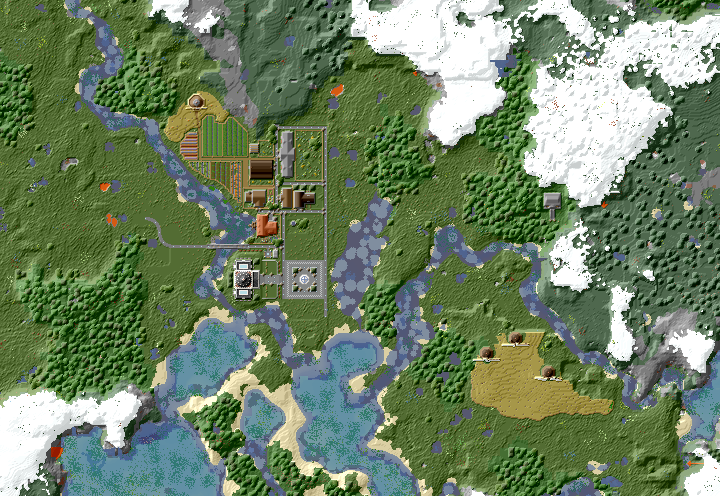
The northern side of the city is the oldest and contains much of the farming and mining infrastructure that helped establish the city. The architecture employs primarily wood, stone, and wool, as these are cheaper building materials. Notable buildings in this area include (in the order they were constructed) the farm house, storage room, horse barn, library, sheep barn, chicken coop, and blacksmith watermill. Many of the designs were inspired by YouTuber ハヤシ; the chicken coop used the design by DBKMinecraft, and the wheel design for the watermill was by Twin Saw. (All following screenshots use BSL Shaders.)

Beyond the farm buildings lies large crop farms that were used for trading. The windmill constructed here was based on the Ramløse Windmill. This view is postcard material!

Below is a gallery of more shots around town. The overall ambience/feel that I’m going for is English countryside (more precisely, a parody of the qualities most requested by guests on the British show Escape to the Country).
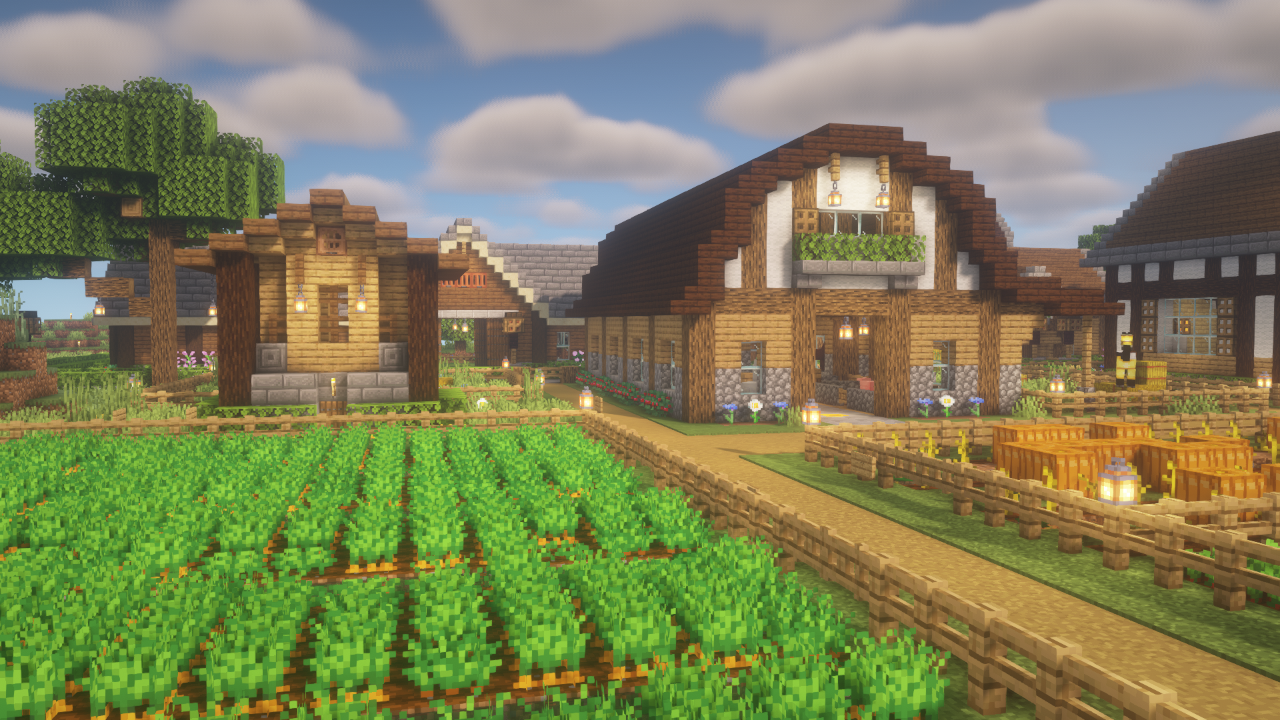
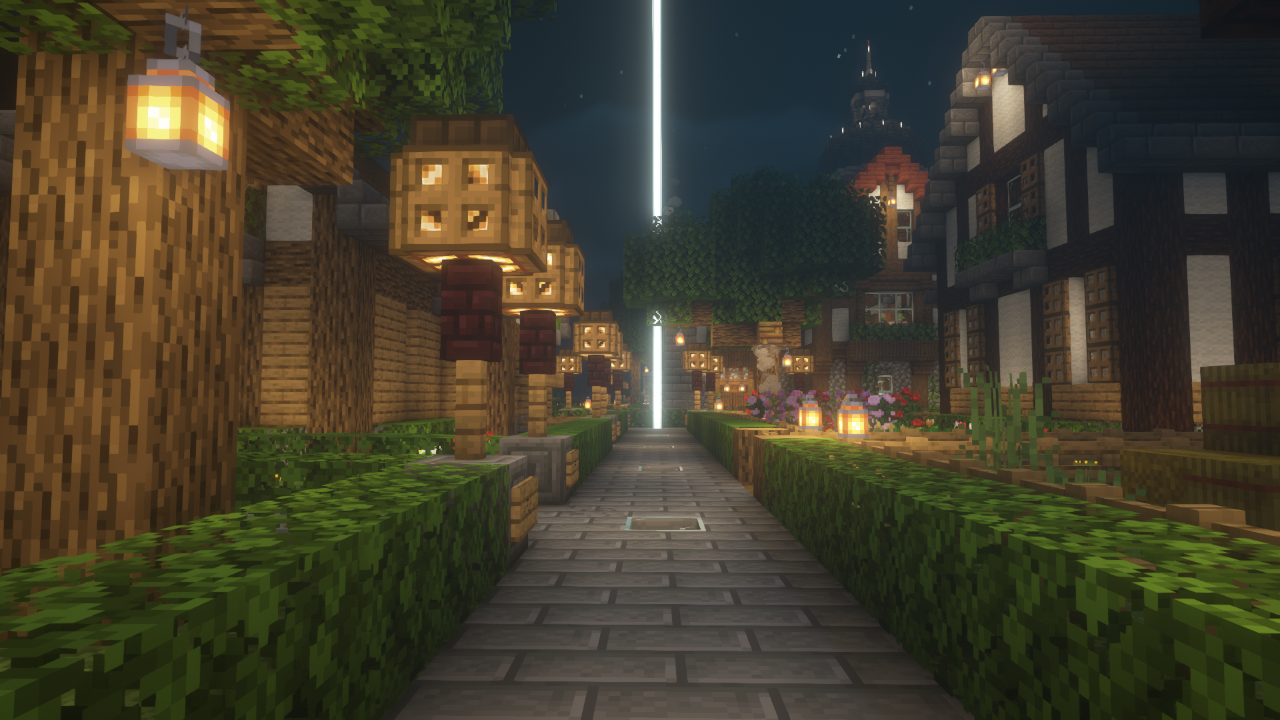
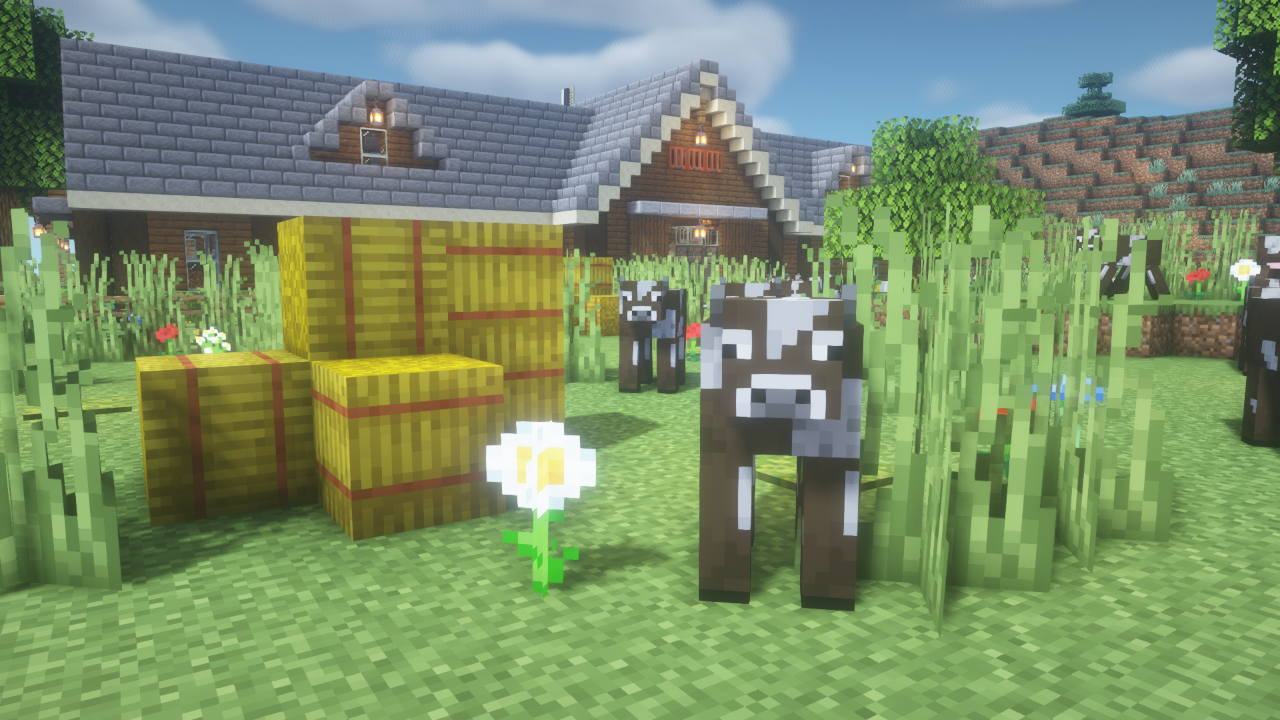

The emeralds earned through trading were put toward the construction of a city hall, the Akadate (赤舘). This design is a modified version of Halaciuga’s Provincial Town Hall. I think the deepslate brick and tile roof contrasts well with the brick and nether quartz walls. As of this post, I’ve farmed 17,534 carrots, 15,690 pumpkins, 15,669 potatoes, and 8,570 melons, and used those to trade 22,052 times with villagers… Yes, this was all built in survival by hand!

The real challenge for these buildings was interior decor, and I think I’m pretty happy with the designs I came up with.
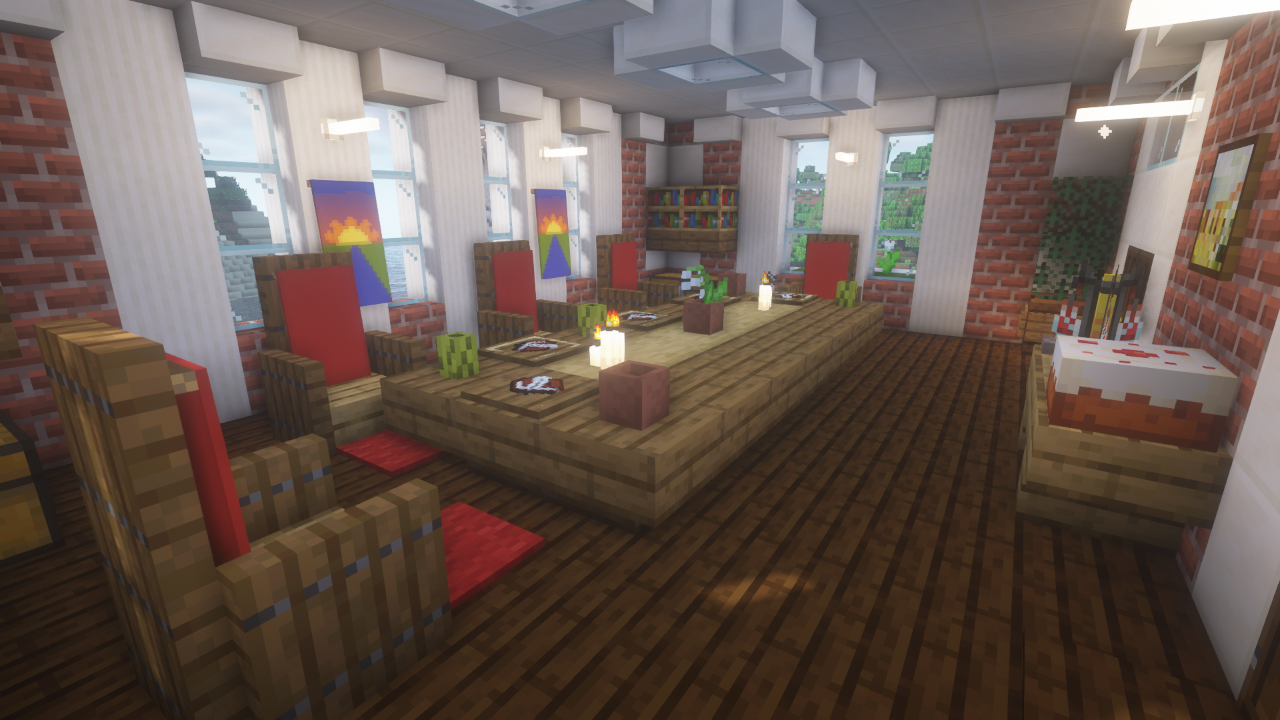

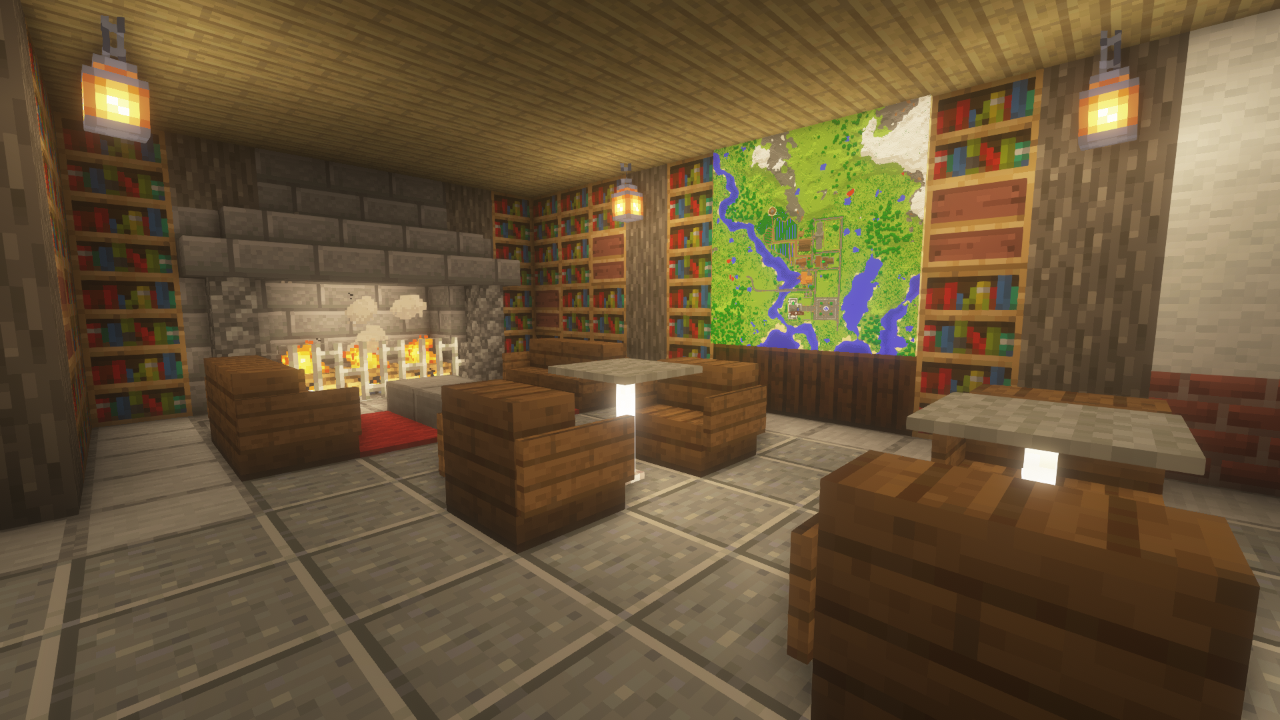
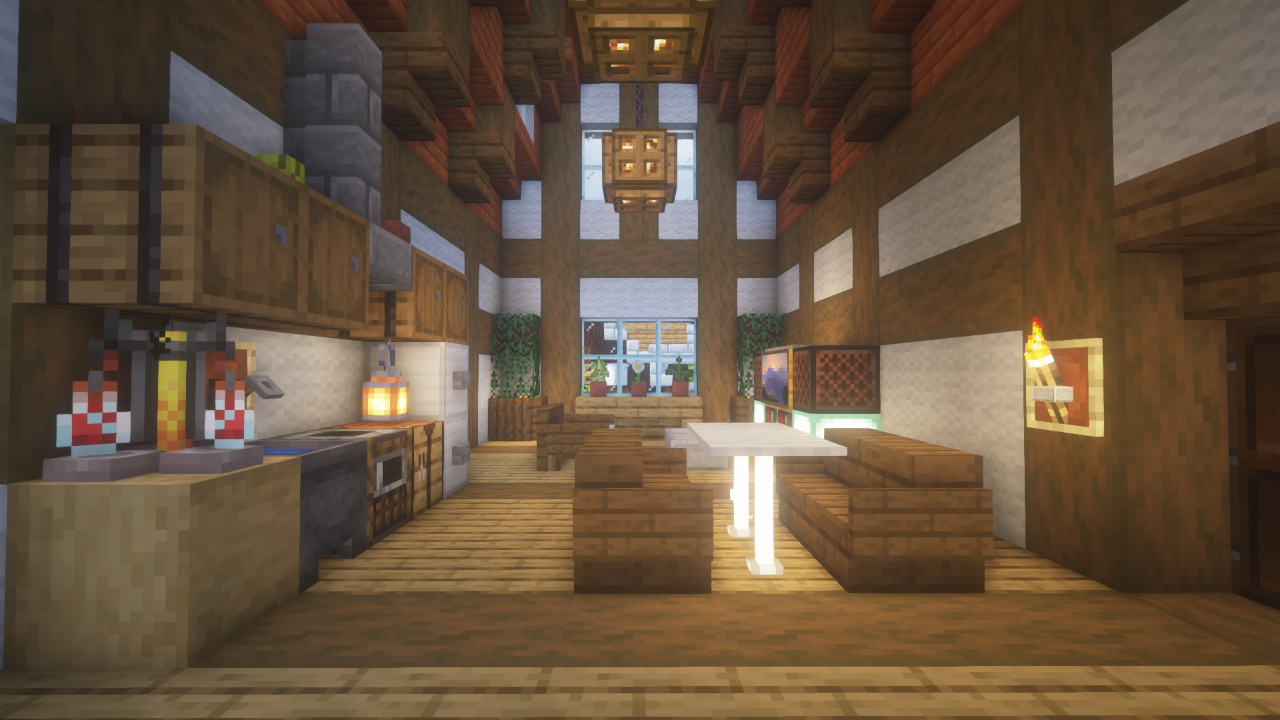
On the eastern outskirts of the city lies Toukou Shrine (東光神社), a Japanese Shinto-style temple with a nether portal inside of it. The temple explains the supernatural concept of the Nether. I’m also a fan of the juxtaposition between European and Japanese style architecture.

Lastly, to the southeast of the city we have giant windmills because… why not more. These ones are based on the famous windmills at Kinderdijk. These are located in a valley where I plan to build a small farming village called Hanazono (花園町, Hanazono-chou).

There’s so much more that I’d like to add to this world. In no particular order:
- Add swan boats to the small lake next to the town square (coming soon!)
- Add azalea trees to look like blooming sakura next to the river
- Finish the area around town square (thinking about rowhouses or an inn, not sure yet)
- Add underground subway lines
- Add residential districts
- Expand across the river





